The greatest male tennis player of the last 50 years: the fans' verdict
Novak Djokovic was hoping to defend his Wimbledon title this weekend. Instead, he is at home recovering from Covid-19. It may be some time until the world’s best players are reunited at a grand slam. So, for now, we have to content ourselves with reminiscing about their past glories.
This week we have been analysing the best male players of the past 50 years. Our writers made the case for Djokovic, Pete Sampras, Rafael Nadal, Bjorn Borg and Roger Federer. Now it’s time for the readers to offer their verdict. More than 1,500 of you have been in touch and you have a clear favourite. Time and time again you wrote to us to extol his virtues, not just his record of 20 grand slam titles but also his elegance on the court and class off it.
Federer’s two great contemporaries, Nadal and Djokovic, were also popular with readers, as were some of the greats of yesteryear, with John McEnroe, Rod Laver, Andre Agassi, Boris Becker and Jimmy Connors all having their backers. Thanks to everyone who took part.
Roger Federer
It isn’t just down to his record number of grand slams titles. There is his domination through the mid-2000s; his incredible record of 310 weeks as world No 1; and his success on all surfaces. He adapted his game as well as any of the great players of the 1970s, going from the slow clay of Paris to the lightning fast lawns of SW19.
Above all, though, is his longevity. As the big hitters such as Nadal and Juan Martín del Potro came to the fore, Federer knew he would have to concentrate on closing off points at the earliest possible opportunity. When the best returners in the game, Andy Murray and Djokovic, entered the fray, he had to find the impossible angles to ensure they had no reply. Their challenges have only strengthened his game. And he does all this while continuing to have the most stylish groundstrokes the game has ever been. Don’t even get me started on his attire. The man has brought style back to tennis. If he started wearing a top hat, the whole world would follow suit.
I remember the first time I saw him play, against Xavier Malisse at Wimbledon in 2001. We stumbled across the match on Court 13 and, as he came through in five sets, I remember my mother and I looking at each other, knowing he could be quite good. Without a doubt my favourite memory of watching him play has to be the Australian Open final against Nadal in 2017.
Six months earlier I had been heartbroken as I was sure Federer’s back injury would prevent him from playing competitively again. But after two incredible five-setters against Kei Nishikori and Stan Wawrinka, he produced an incredible finale under the floodlights. Federer gave us the fairytale comeback every tennis fan was surely praying for. And who better to share the stage with but his friend and nemesis Nadal, who has had his own injury woes. I thought that might be the last time we would see these two giants perform at such incredible heights, but they have kept proving me wrong, reaching final after final. Ralph Melhuish

Novak Djokovic
The battle to be the best player of the past 50 years comes down to a battle between three current players: Novak Djokovic, Roger Federer and Rafael Nadal. And Djokovic wins it. He has a better head-to-head against the other two; he has won four grand slams in a row; and he has a 3-0 record against Federer in Wimbledon finals.
Federer’s grand slam record is a little bit skewed due to the lack of competition he faced early on in his career; he is 16-1 in grand slam finals against players other than Djokovic and Nadal, while going 4-10 against Djokovic and Nadal. He is also five years older than Djokovic, who is catching him on the grand slam front quickly.
Related: The greatest: Novak Djokovic – speedy superserver who masters mind games
Nadal is the greatest clay-courter of all time, with 12 of his 19 grand slam titles coming on the surface. But Djokovic is the greatest because he is the most well-rounded of the three. Nadal has still not beaten Djokovic at the Australian Open, yet Djokovic has beaten the Spaniard in all four slams. Djokovic is the only player who can fluster Nadal on clay, one of only two players to have beaten him at Roland Garros. It is only a matter of time before Djokovic wins the most grand slams and spends the most weeks at world No 1. Matt Graver

Rafael Nadal
Rafael Nadal gets my vote for his heart, intensity, focus, resilience and sportsmanship. Every time he steps on to the court, you know you are about to watch something special. He does not make it look as easy as Federer; he does not have the speed of Djokovic; and he does have the power of many of the up-and-coming players. He consistently hammers the ball across the net, fights for every single point, makes superhuman shots and conducts himself with class and humility, on and off the court.
Nadal’s love of the game is palpable and his record speaks for itself. The joy of watching him play only increases as his career progresses. The 2008 Wimbledon final will go down as one of the greatest tennis matches of all time. Watching Nadal pick up his first Wimbledon title against Federer is one of my best tennis memories. Cindy Stevens

Pete Sampras
Pete Sampras won so many titles – including 14 grand slams – at a time when there were a lot of top-notch competitors. Look at the list of the players he faced who are considered all-time greats: Boris Becker, Jim Courier, John McEnroe, Andre Agassi. All of them were rivals and yet Sampras had won the most grand slam titles until Roger Federer came along.
Related: The greatest: Pete Sampras – cool head with a weapons-grade serve
Federer is a great player but he won many of his grand slam titles when there were fewer top-class level players to beat. Sampras won all of his amid a higher level of competition. Also, he was a gentleman and a credit to the game, with no temper tantrums or poor sportsmanship. Good guys can finish first. Harvey Vlahos
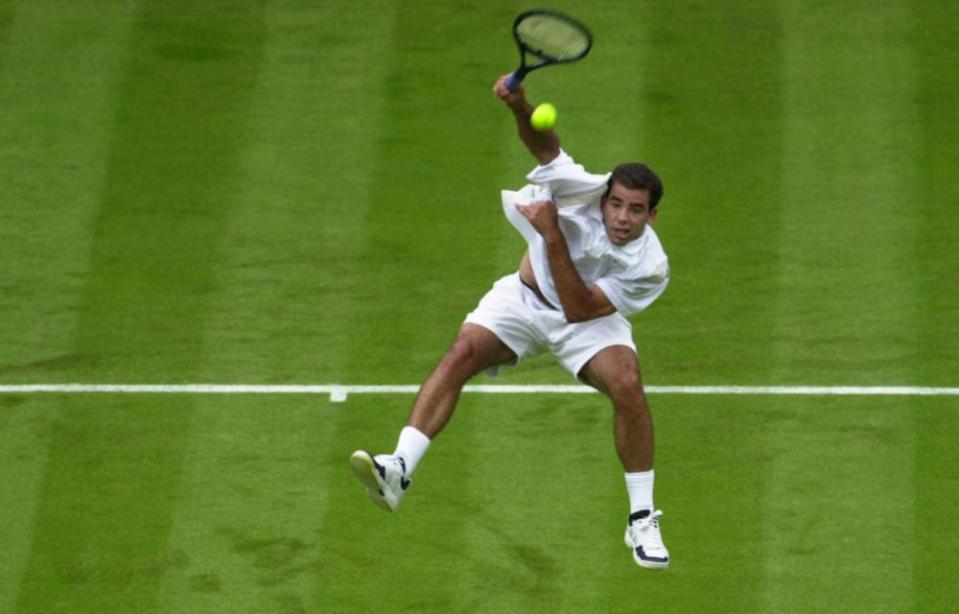
John McEnroe
John McEnroe achieved a lot in a short space of time. His biggest achievement in a way was from 1979 to 1981, when he broke into the top three alongside Bjorn Borg and Jimmy Connors before eventually overtaking them to reach the No 1 spot. McEnroe himself states that chasing and then overtaking the previous decade’s big two was the most satisfying time in his career. In a way, running the great Borg out of town created a dilemma for McEnroe. He could never recreate the excitement of playing Borg again.
Although he “only” won seven grand slams, that was in the days when amassing majors did not seem such an obsession (he rarely played Australia for example). And to fully appreciate McEnroe, you need to look at his doubles record. Along with Peter Fleming he formed best team in any world sport for years. In all he helped win 10 grand slam doubles titles, one of them the French Open mixed in 1977.
But it’s not all about how much you win. It’s also about how you do it. And that is what made McEnroe great. At his best, he was the equal of anyone. Fred Perry said he had the best hands he had ever seen. His footwork was on a par with Federer’s. His aggression and commitment to the fight draws comparisons with Nadal and Djokovic.
He lost his edge too early, but between 1979 and 1984 he was the best athlete in the world. His record of 82 wins and only three losses in 1984 is what seals him as my greatest. For that year he was virtually untouchable. His defeat of Connors in the Wimbledon final was a one-sided execution. Connors himself is one of the all-time greats but that day he was swatted aside like a fly. That was McEnroe’s great masterpiece. If only he had beaten Ivan Lendl in the French a few weeks earlier. But that was part of the Mac magic. Occasionally he would implode amid the self-created drama. But while he was up there with Borg and Connors, he was the most compelling sight in all of sport. Donald Butler
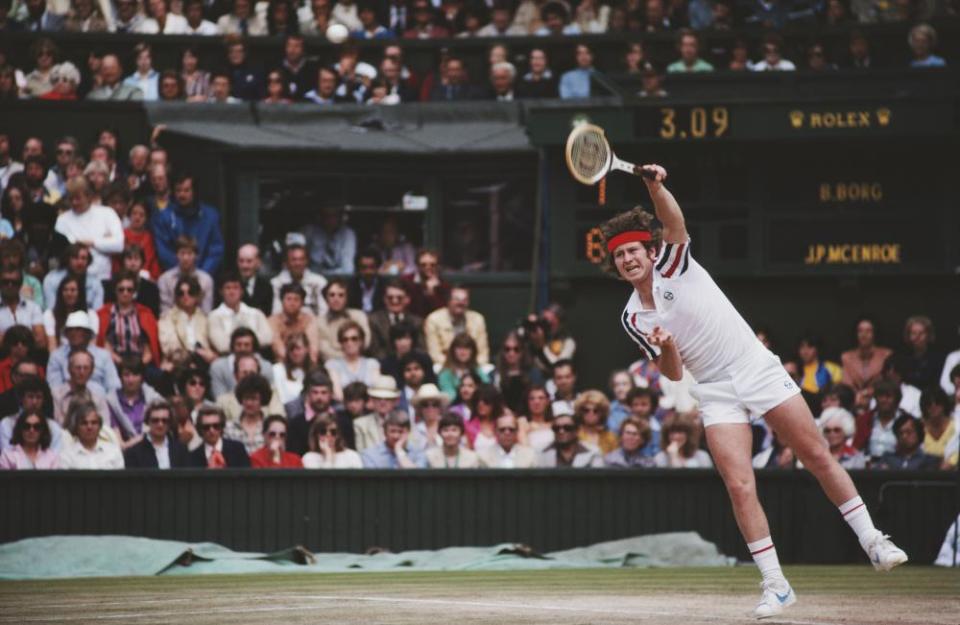
Rod Laver
Rod Laver is the only player to have won two calendar year slams – in 1962 and 1969. Heaven knows how many more he would have won had he not been banned, after he turned professional, for five years. To return after that and win another calendar slam is a remarkable achievement, one that is unlikely to be repeated. He was a proper gentleman who played with finesse and elegance. It is doubtful we would have Federer without Laver. He is revered in the tennis world, especially by Federer, and that’s some compliment. Patrick Callaghan
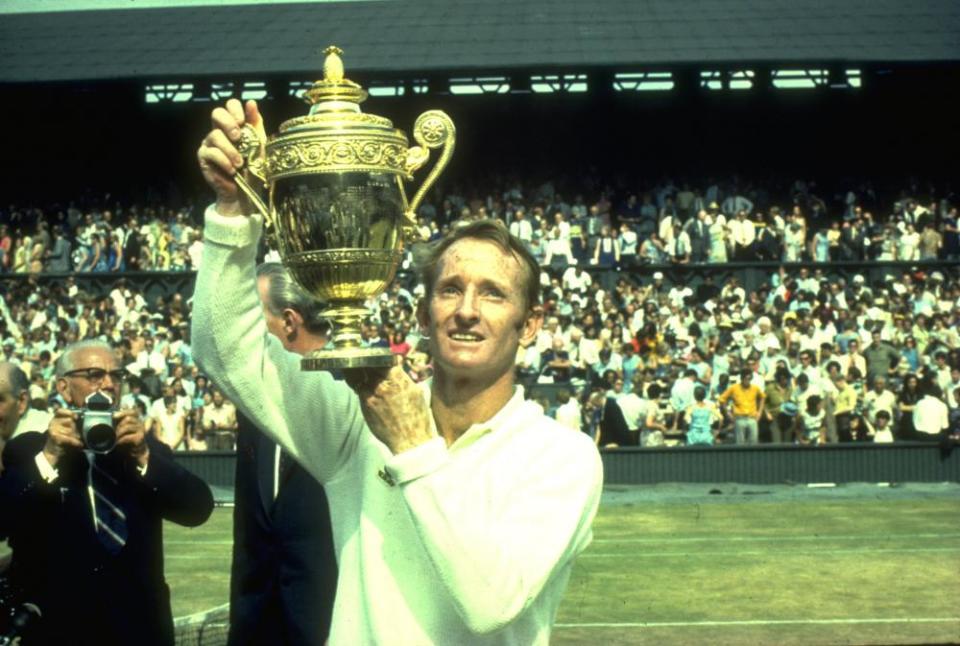
Bjorn Borg
Bjorn Borg’s sublime footwork, agility and speed around the court made him stand out. He nearly always found a way to get the ball back, which must have left his opponents wondering just how they were going to win a point. He was a superb athlete, able to finish tough five-set matches as if he was starting them. He had a cool demeanour on court and rarely showed emotion, not giving anything away. Borg, who won 11 grand slams, produced some revolutionary strokes, including a crushing two-handed topspin backhand, a looping topspin forehand and an attacking topspin lob. His serve got the job done, too. And he hit the ball very, very hard.
His victory over Jimmy Connors in the Wimbledon semi-finals in 1981 stands out. Connors was on fire, taking the first set 6-0 and the second 6-4. Borg finally started asserting himself in the third, taking it and the remaining sets to win the match and make it to the final for the sixth year in a row. I remember jumping up from a sofa at the end of the game and punching the air. Chris Green
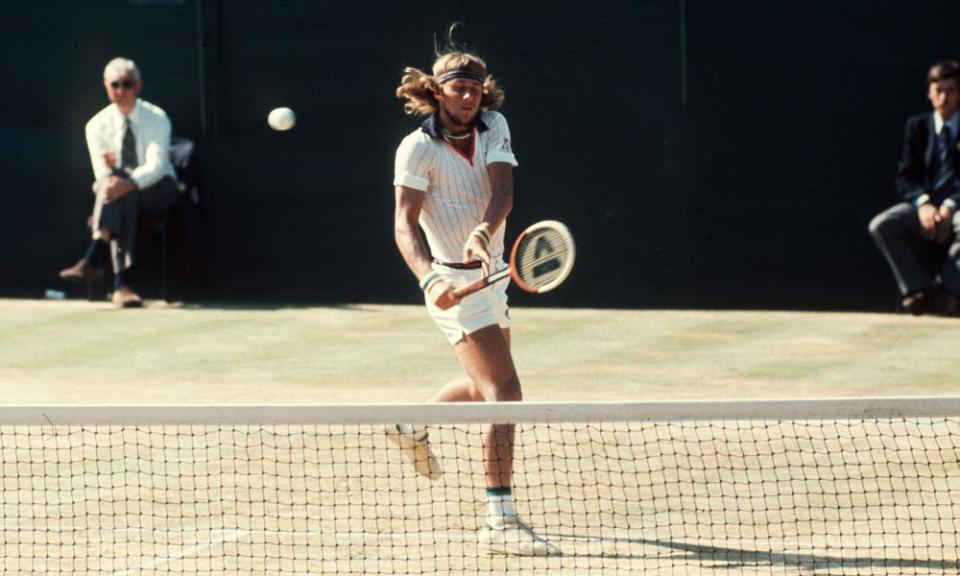
Andre Agassi
Andre Agassi deserves to be mentioned in this discussion. Despite inconsistencies in his career – which in part made him such an exciting player to watch – he played fine tennis and was an athlete who transcended his sport. As with several others after him, he had to contend with extraordinary fame, money, constant focus and criticism. He was among the most famous men in the world. Even when he was playing the challenger circuit, he remained among the highest-paid athletes around.
When judging sportspeople we often look at the trophies they won. For me, sport it is about personality. Perfection can be boring and uninspiring. However great Federer, Nadal and Sampras are, they lack a level of energy – something I never missed with Agassi. Allan Fletcher
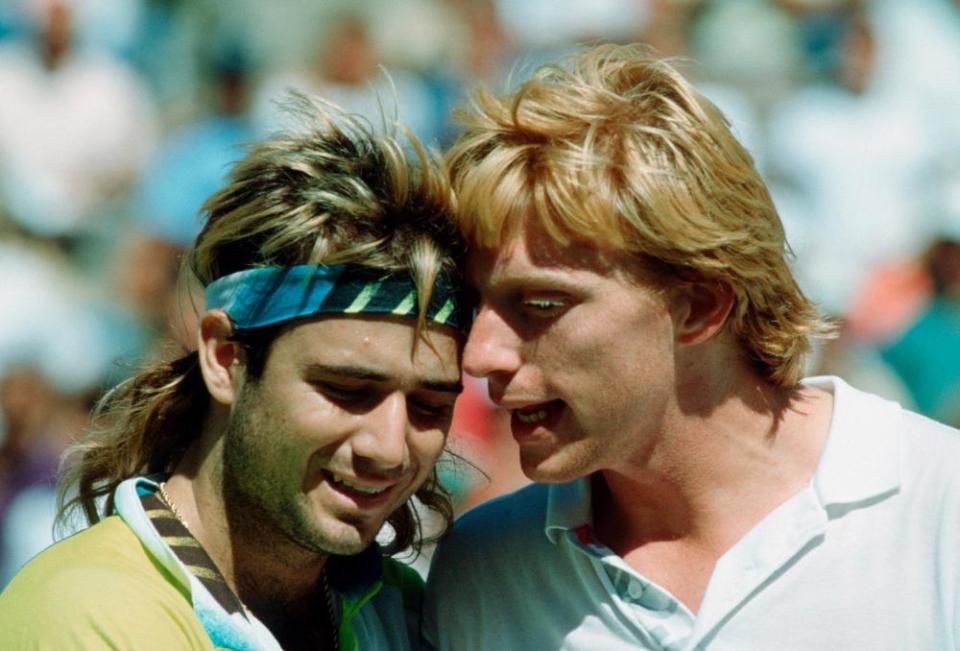
Boris Becker
Boris Becker was only 17 when he won his first Wimbledon title in 1985. He was the youngest grand slam winner at the time and he is almost singlehandedly responsible for the the German tennis wave that followed. He was an emotional player, with an excellent and exciting game. You knew you were in for action and drama when he was playing. Also, he’s no boring, clean-cut guy. While he does say the wrong things at times, he wears his heart in his sleeve. Dan Zilic
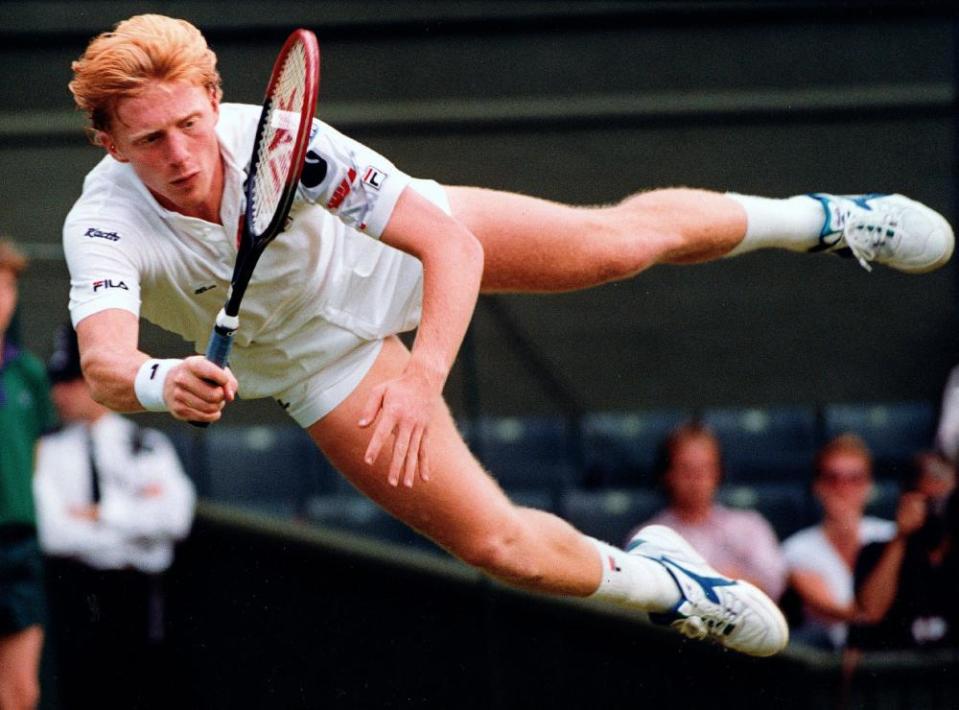
Arthur Ashe
To be great in any sport, winning is not the only thing. Some brilliant players have been awful ambassadors for tennis, but Arthur Ashe’s life was exemplary. Even after he contracted Aids from an infected blood transfusion, he used his misfortune to do good, starting a foundation in his name aimed at raising awareness of the illness. He died way too early, at the age of 49.
I was won over by his composure, his seriousness and his success against overwhelming odds, on and off the court. My favourite memory was the 1975 Wimbledon final. Jimmy Connors was the overwhelming favourite and Ashe had to find a strategy to beat him. Connors fed off power but when given a low, short ball he would often whack it into the net. Ashe worked that out, used it to his advantage and won. I was a boy at the time and remember the sight of Ashe during the changeovers, sitting quietly with his eyes closed, his hands on his knees, apparently meditating, as if he had access to some sort of secret power that could overcome the physical power on the court. John Bonner
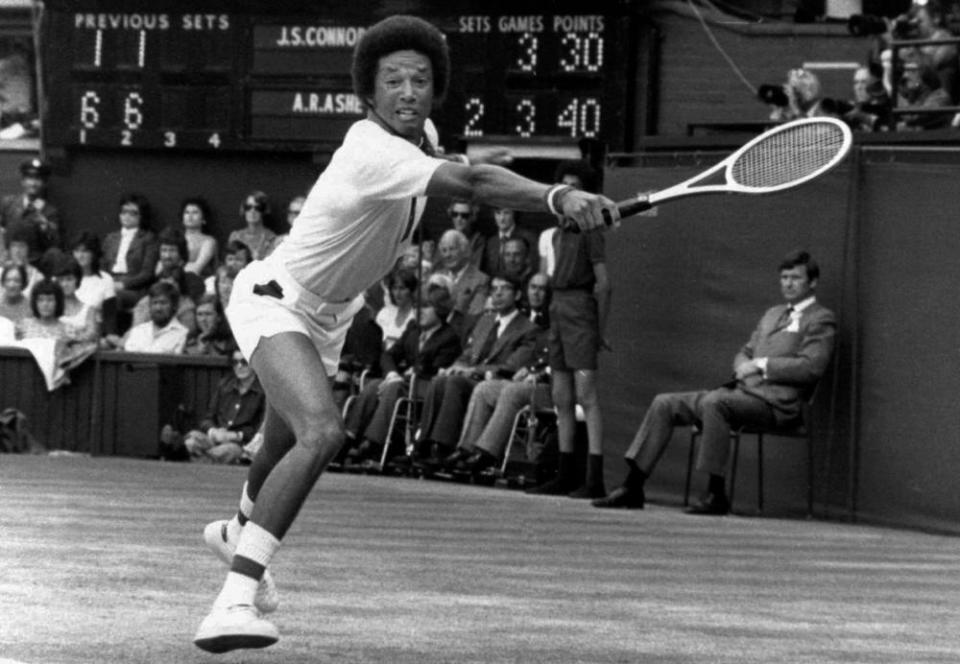
Jimmy Connors
For longevity, determination and sheer will to win, I would put Jimmy Connors at the top. Nowadays players go on for ever, but the playing career was much shorter in Connors’ era. He competed and won at the highest level for 10 years, claiming his second Wimbledon title eight years after his first – by which time he had been written off as past it. To top it off, he won all of his grand slam titles – two at Wimbledon, five at the US Open and one at the Australian Open – with the same tiny T2000 racket that might have been revolutionary in 1968, but had long since past its sell-by date.
Related: The greatest female tennis player of the last 50 years: the fans' verdict
Connors is the bridge between the genteel, upper-middle class snootiness of the amateur tennis club and the modern, ultra-focused, hard-hitting professional game. No one can match his 109 career singles titles. In his best performances Connors was like a windmill in a hurricane, cracking the ball for all he was worth, low over the net and aiming for the lines. He did not have the concentration of Borg, or the variety of shot of McEnroe, but he had more turbo-charged mojo than both of them put together. Paul Johnson


 Yahoo News
Yahoo News 
